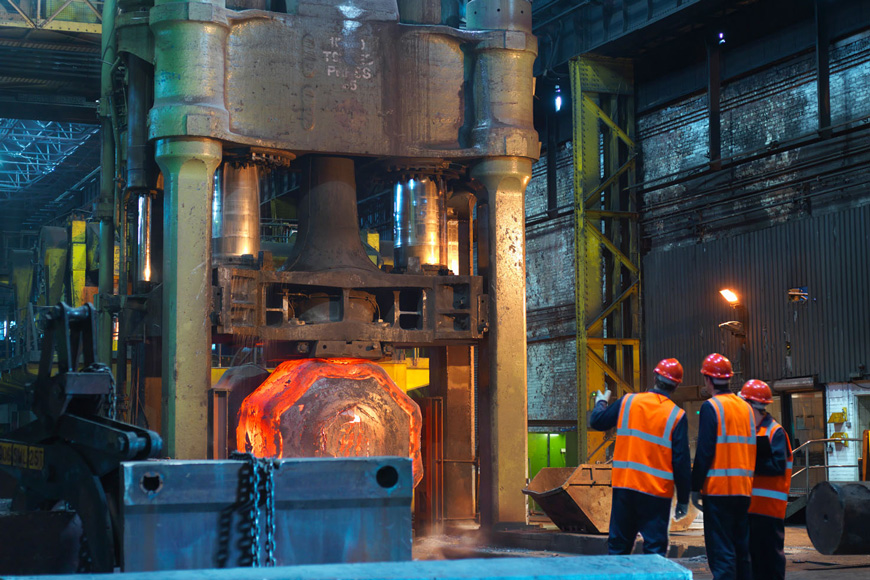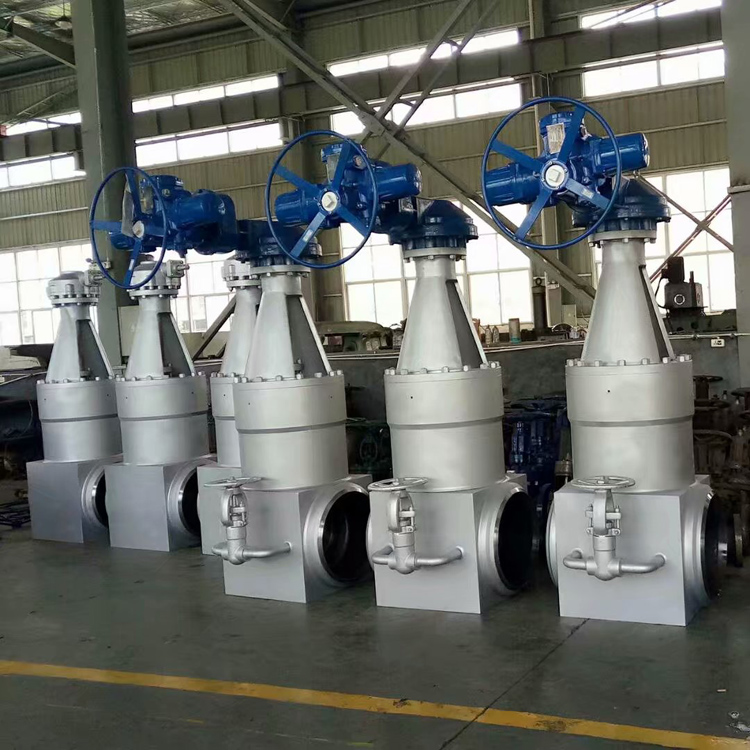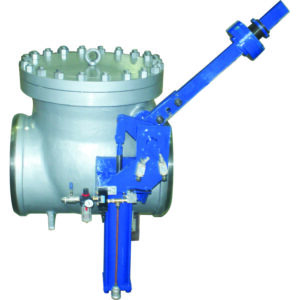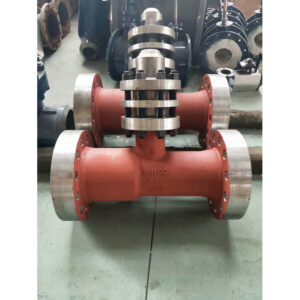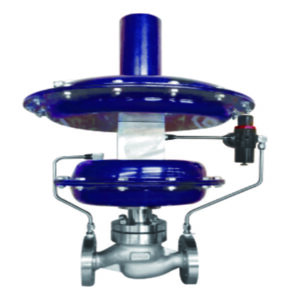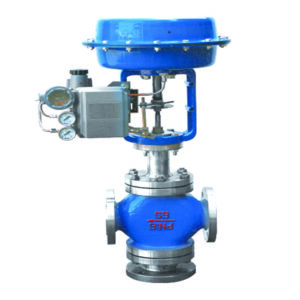The difference between valve casting and valve forging
Forging and casting are two of the most common ways to create high quality valves. The biggest difference between valve forging and casting methods is the way they are performed.
Casting is the transformation of a formless liquid metal into a solid with a shape.
Forging is mainly formed by high temperature extrusion: the grains in the piece can be
refined.
Forging is a process of transformation by deformation of metal pieces with various cross-sections, usually brought to a high temperature (higher than the recrystallization temperature) and then machined with a forging press, which permanently change the shape of the piece, without bringing it to break. You will be able to collaborate with the best factories that use the forging process, always guaranteeing the maximum in efficiency, quality and variety of forgings.
The forging process is suitable for various markets:
Petroleum: Valve bodies, flanges, covers, stems and other parts for subsea installations
Energy: Shafts, rotors, wheels, gas turbines
Steel: Cylinders, shafts, pinions and more
Mechanical: Eccentric shafts, pistons, discs, spindles, etc.
Infrastructure: Drive shafts, wheels, gears, rotors.
Mining: Rings, wheels, blocks, hubs, shafts, etc …
TYPE OF FORGING
Subdivision based on the forging temperature
When the temperature exceeds 300-400 ℃ (blue brittle zone of steel) and reaches 700-800 ℃, the deformation resistance will decrease sharply, and the deformation energy will also be greatly improved.
According to the forging in different temperature regions, according to the different forging quality and forging process requirements, it can be divided into three forming temperature regions:
- cold forging
- warm forging
- hot forging
The initial recrystallization temperature of steel is about 727 °C, but 800 °C is generally used as the dividing line, and hot forging is higher than 800 °C; between 300 and 800 °C, it is called warm forging or semi-hot forging. Forging at room temperature without heating is called cold forging.
During low temperature forging, the dimensional change of the forging is small. Forging below 700 ℃, less oxide scale is formed, and there is no decarburization on the surface. Therefore, as long as the deformation energy is within the range of forming energy, cold forging can easily obtain good dimensional accuracy and surface finish. As long as the temperature and lubricating cooling are well controlled, warm forging below 700°C can also achieve good accuracy. During hot forging, large forgings with complex shapes can be forged due to the small deformation energy and deformation resistance. To obtain forgings with high dimensional accuracy, hot forging can be used in the temperature range of 900-1000 °C. In addition, pay attention to improving the working environment of hot forging. The life of the forging die (20,000 to 5,000 for hot forging, 10,000 to 20,000 for warm forging, and 20,000 to 50,000 for cold forging) is shorter than forging in other temperature ranges, but it has a large degree of freedom and low cost .
The blank is deformed and work hardened during cold forging, which makes the forging die bear high load.
Therefore, it is necessary to use a high-strength forging die and a hard lubricating film treatment method to prevent wear and adhesion. In addition, in order to prevent billet cracks, intermediate annealing is performed when necessary to ensure the required deformability. In order to maintain a good lubricating state, the blank can be phosphated. In the continuous processing of bar and wire rod, the section can not be lubricated at present, and the possibility of using phosphating lubrication method is being studied.
Subdivision based on the movement of the blanks
According to the movement of the billet, forging can be divided into 5 different types:
1. Free forging
2. Upsetting
3. Extrusion
4. Die forging
5. Closed die forging
6. Closed upsetting
Free forging
It’s a processing method of forgings that uses impact force or pressure to freely deform the metal in all directions between the upper and lower anvil surfaces, and obtains the required shape and size and certain mechanical properties without any restrictions, referred to as free forging.
Features
The tools and equipment used in free forging are simple, versatile and low in cost. Compared with casting blanks, free forging eliminates shrinkage holes, shrinkage porosity, pores and other defects, so that the blanks have higher mechanical properties. Forgings are simple in shape and flexible in operation. Therefore, it has special significance in the manufacture of heavy machinery and important parts.
Main equipment
Free forging equipment is divided into 2 categories:
Forging hammer: used in production include air hammers and steam-air hammers. Some factories also use spring hammers, plywood hammers, lever hammers and wire hammers with simple structure and low investment.
Hydraulic press: deforms the billet by the static pressure generated by the liquid and is the only way to produce large forgings.
Basic process
The basic process of free forging includes upsetting, drawing, punching, bending, torsion, offset, cutting and forging.
Die forging
Die forging refers to a forging method that uses a die to form a blank on a special die forging equipment to obtain a forging. The forgings produced by this method are accurate in size, small in machining allowance, complex in structure and high in productivity.
According to different equipment, die forging is divided into:
- hammer die forging
- crank press die forging
- flat forging machine die forging
- friction press die forging
- etc.
Features
The process of forging and forming a metal blank with a forging die on a die forging hammer or a press. The die forging process has high production efficiency, low labor intensity, accurate dimensions, small machining allowance, and can forge forgings with complex shapes; it is suitable for mass production. However, the cost of the mold is high, and special forging equipment is required, which is not suitable for single-piece or small batch production.
Preparation
The forging die for die forging consists of two upper and lower modules. The die cavity 4 is the working part of the forging die, and the upper and lower dies are each half. Use dovetails and wedges 1 and 2 to fix on the hammer anvil and worktable; and guide with locks 3 or guide posts to prevent dislocation of the upper and lower modules.
Basic process
The process of die forging is divided into
1. billet making
2. pre-forging
3. final forging
The cavity of the final forging die is determined according to the size and shape of the forging, plus the allowance and deviation.
Subdivision based on the mode of movement of the forging die
According to the movement mode of the forging die, forging can be divided into:
- pendulum rolling
- pendulum swaging
- pendulum rotary forging
- roll forging
- cross wedge rolling
- ring rolling
- skew rolling
In order to improve the utilization rate of materials, roll forging and cross-rolling can be used as front-end processing of slender materials. Rotary forging, like free forging, is also locally formed, and its advantage is that it can be formed with a small forging force compared to the size of the forging. In this forging method, including free forging, the material expands from the vicinity of the die surface to the free surface during processing, so it is difficult to ensure accuracy. The forging force can be used to obtain products with complex shapes and high precision, such as forgings such as steam turbine blades with many varieties and large sizes.
According to the deformation limiting characteristics of the bottom dead center, the forging equipment can be divided into the following 4 methods:
1. Form of limiting forging force: hydraulic press that directly drives the slider by hydraulic pressure.
2. Quasi-stroke limitation: hydraulic press that drives the crank connecting rod mechanism by hydraulic pressure.
3. Stroke limitation: mechanical press with crank, connecting rod and wedge mechanism driving the slider.
4. Energy limitation: use the screw and friction press of the screw mechanism.
In order to obtain high precision, care should be taken to prevent overload at the bottom dead center, and to control the speed and mold position. Because these will have an impact on forging tolerances, shape accuracy and forging die life. In addition, in order to maintain the accuracy, attention should also be paid to adjusting the clearance of the slider guide rail, ensuring the rigidity, adjusting the bottom dead center and using the auxiliary transmission device.
In addition, according to the movement mode of the slider, there are also vertical and horizontal movement of the slider (for forging of slender parts, lubrication and cooling and forging of high-speed production parts), and the compensation device can be used to increase the movement in other directions. The above methods are different, and the required forging force, process, material utilization, output, dimensional tolerance and lubrication and cooling methods are different, and these factors are also factors that affect the level of automation.
Advantages of Forging
Forging production is one of the main processing methods for providing mechanical parts blanks in the machinery manufacturing industry.
Through forging, not only the shape of mechanical parts can be obtained, but also the internal structure of the metal can be improved, and the mechanical and physical properties of the metal can be improved. Generally, for important mechanical parts with high stress and high requirements, most of them are manufactured by forging production methods. Such as steam turbine generator shafts, rotors, impellers, blades, guard rings, large hydraulic press columns, high pressure cylinders, rolling mill rolls, internal combustion engine crankshafts, connecting rods, gears, bearings, and artillery in the defense industry and other important parts are forged.
Uses of the forging technique
Forging production is widely used in metallurgy, mining, automobiles, tractors, harvesting machinery, petroleum, chemical industry, aviation, aerospace, weapons and other industrial sectors, even in daily life, forging production also plays an important role. In a sense, the annual output of forgings, the proportion of die forgings in the total output of forgings, and the size and ownership of forging equipment reflect a country’s industrial level to a certain extent. Materials used for forging
Forging materials are mainly carbon steel and alloy steel of various compositions, followed by aluminum, magnesium, copper, titanium, etc. and their alloys.
The raw state of the material is bar, ingot, metal powder and liquid metal. The ratio of the cross-sectional area of the metal before deformation to the cross-sectional area after deformation is called the forging ratio.
The correct selection of forging ratio, reasonable heating temperature and holding time, reasonable initial forging temperature and final forging temperature, reasonable deformation amount and deformation speed have a lot to do with improving product quality and reducing costs. Generally, small and medium-sized forgings use round or square bars as blanks. The grain structure and mechanical properties of the bar are uniform and good, the shape and size are accurate, and the surface quality is good, which is convenient for mass production. As long as the heating temperature and deformation conditions are reasonably controlled, forgings with excellent performance can be forged without large forging deformation. Ingots are only used for large forgings. The ingot is an as-cast structure with large columnar crystals and a loose center. Therefore, it is necessary to break the columnar crystals into fine grains through large plastic deformation and compact them loosely to obtain excellent metal structure and mechanical properties.
The powder metallurgy preforms that have been pressed and sintered can be made into powder forgings by forging without flash in the hot state.
The forging powder is close to the density of general die forgings, has good mechanical properties, and has high precision, which can reduce subsequent cutting operations. Powder forgings have uniform internal structure and no segregation, and can be used to manufacture small gears and other workpieces. However, the price of powder is much higher than that of general bars, and its application in production is limited.
Applying static pressure to the liquid metal poured in the die cavity makes it solidify, crystallize, flow, plastically deform and form under the action of pressure, and then die forgings with the desired shape and properties can be obtained. Liquid metal die forging is a forming method between die casting and die forging, and is especially suitable for complex thin-walled parts that are difficult to form in general die forging.
Additional and less common materials for forging
- Aluminum, magnesium
- Copper, titanium
- Iron-based alloys and superalloys
- Nickel-based superalloys
- Cobalt-based superalloys
Sand forging process
The choice of suitable forging technology is particularly important for the valve, and, to date, the forging method commonly used in the valve industry is sand forging.
Sand forging can be divided into:
1. Wood die forging
It has a wide range of applications, and can forge various complex shapes, especially castings with complex inner cavities. However, the quality of the casting is poor, the appearance is rough, uneven, the mechanical properties are unstable, and the mold is easily damaged. In the current market, the surface of the wooden mold is usually covered with a layer of resin, so that the surface of the wooden mold is lubricated and flat, the hardness and strength are improved, and the mold is not easily deformed. The quality and appearance of the forged castings have been greatly improved, and the comprehensive mechanical properties of the castings have also been enhanced. The disadvantages of sticking sand and falling sand are reduced.
2. Investment forging
Also known as wax mold forging, the general production process is as follows: first use wax to create the same appearance as the casting, coat paint and quartz sand, immerse in hardening liquid to harden, and then dissolve the wax to obtain an empty shell, which is then dried. , Remove the water, pour the molten metal into the empty shell, after cooling and condensing, break the shell and take out the casting. The characteristics of investment forging are: overall appearance production, no parting surface, no core making, core setting process, no wrong box for castings, high quality accuracy and surface quality, forging wall thickness can reach 4mm, can achieve less cutting, no Machining, but the cycle factory. It can be applied to various forging alloys and small and medium-sized precision parts with complex shapes, difficult processing and high dimensional accuracy. 3. Lost foam forging
Lost foam forging is also called negative pressure forging. The main feature that is different from other forging methods is that it is a dry sand negative pressure forging. The general production process is: first make a plastic foam with the same appearance as the casting, then dry it in the drying room, bury it in dry sand after drying, cover a layer of film on the surface of the dry sand, and carry out air extraction. Vacuum treatment, and then pour the metal melt, the melt melts the foam into the cavity, and then pours out from the special sand box after the casting is cooled and condensed.
REMEMBER: Different forging methods have different processes!
Forging Features
Compared with castings, the metal structure and mechanical properties can be improved after forging.
After the casting structure is deformed by the forging method, due to the deformation and recrystallization of the metal, the original coarse dendrites and columnar grains become an equiaxed recrystallized structure with finer grains and uniform size, which makes the original segregation and recrystallization in the steel ingot. Porosity, pores, slag inclusions, etc. are compacted and welded, and the organization becomes more compact, which improves the plasticity and mechanical properties of the metal.
The mechanical properties of castings are lower than those of forgings of the same material. In addition, the forging process can ensure the continuity of the metal fiber structure, so that the fiber structure of the forging is consistent with the shape of the forging, and the metal streamline is complete, which can ensure the parts have good mechanical properties and long service life.
Forging Process Precautions
The forging process includes the following technical steps:
- cutting the material to the required size
- heating, forging
- heat treatment
- cleaning
- inspection
In small-scale manual forging, all of these operations are performed in a small space by multiple forges to reduce environmental and occupational hazards.
Although the working conditions vary according to the shape of the forging, they share some common characteristics: manual labor of moderate intensity, hot and dry microclimate environment, generation of noise and vibrations, and air pollution due to smog. Workers are exposed to high temperature air and heat radiation at the same time, which leads to the accumulation of heat in the body. The amount of perspiration for an 8-hour labor will vary with the small gas environment, physical exertion, and degree of thermal adaptability, generally between 1.5 and 5 liters, or even higher. In smaller forging workshops or farther from the heat source, the Berja II heat stress index is usually 55~95; but in large forging workshops, the working point near the heating furnace or drop hammer may be as high as 150~190.. Exposure to changes in the microclimate environment during the cold season may promote adaptation to some extent, but rapid and too frequent changes may pose a health hazard.
Workplace air may contain soot, carbon monoxide, carbon dioxide, sulfur dioxide, or acrolein, depending on the type of furnace fuel and impurities, as well as combustion efficiency, airflow and ventilation. The swaging hammer will inevitably produce low-frequency noise and vibration, but there may also be a certain high-frequency component, and its sound pressure level is between 95 and 115 decibels. Exposure of workers to forging vibrations can cause temperamental and functional disorders that reduce work capacity and affect safety.
Risk factors in forging production
In forging production, trauma accidents that are prone to occur can be divided into three types according to their causes: mechanical injuries – scratches and bumps directly caused by tools or workpieces; scalds; electrical shocks.
From the perspective of safety and technical labor protection, the characteristics of the forging workshop are:
1. Forging production is carried out in the state of hot metal (such as low carbon steel forging temperature range between 1250 ~ 750 ℃), due to a lot of manual labor, burns may occur if you are not careful.
2. The heating furnace and the hot steel ingots, blanks and forgings in the forging workshop continuously emit a large amount of radiant heat (forgings still have a relatively high temperature at the end of forging), and workers are often affected by thermal radiation.
3. The smoke and dust generated by the heating furnace of the forging workshop during the combustion process are discharged into the air of the workshop, which not only affects the hygiene, but also reduces the visibility in the workshop (for the heating furnace burning solid fuel, the situation is more serious), so work-related accidents may also occur.
4. The equipment used in forging production, such as air hammer, steam hammer, friction press, etc., all emit impact force during work. The device is taking this When the impact load is applied, it is easy to be damaged suddenly (such as the sudden break of the piston rod of the forging hammer), resulting in serious injury accidents.
5. Presses (such as hydraulic presses, crank hot die forging presses, flat forging machines, precision presses), shears, etc., although the impact is small during operation, the sudden damage of the equipment also occurs from time to time. , the operator is often caught off guard, and may also lead to industrial accidents.
6. The working force of forging equipment is very large. For example, forging equipment such as crank presses, tensile forging presses and hydraulic presses, although their working conditions are relatively stable, the force generated by their working parts is For example, my country has manufactured and used a 12,000t forging hydraulic press. It is a common 100~150t press, and the force it emits is large enough. If the mold is installed or operated slightly incorrectly, most of the force is not on the workpiece, but on the mold, tool, or parts of the equipment itself. In this way, a certain installation adjustment error or improper tool operation may cause damage to the machine parts and other serious equipment or personal accidents.
7. There are many types of forging tools and auxiliary tools, especially hand forging and free forging tools, clamps, etc. These tools are placed together at the workplace. During work, tools are frequently replaced and storage is often messy, which will inevitably increase the difficulty of checking these tools. When a tool is needed in forging and cannot be found quickly, it is sometimes used “justly”. Similar tools, for this reason, often cause work-related accidents.
8. Due to the noise and vibration of the equipment in the forging workshop, the workplace is noisy, affecting the human hearing and nervous system, distracting attention, thus increasing the possibility of accidents.
Analysis of the causes of accidents at work in a forging workshop
The areas and equipment that need to be protected lack protective devices and safety devices
The protective devices on the equipment are not perfect or not used
The production equipment itself is defective or faulty
Damaged equipment or tools and inappropriate working conditions
The forging die and the anvil are faulty
Chaos in the organization and management of the workplace
The process operation method and the auxiliary work of repair are not properly done
Personal protective equipment such as protective glasses are faulty, and work clothes and work shoes do not meet the working conditions
When several people work together on an assignment, they do not coordinate with each other
Lack of technical education and safety knowledge, resulting in the adoption of incorrect steps and methods
The development of the forged flange industry
Flange, also known as flange or flange, is mainly used for the connection of tubular parts.
Flanges are very common in the application of mechanical parts, widely used in petrochemical pipelines, metal pressure vessels, building upper and lower water pipelines, municipal water supply pipelines, ships, electric power and other industries.According to the different raw materials used, flanges can be divided into:
- carbon steel flanges
- stainless steel flanges
- alloy steel flanges
According to different manufacturing processes, flanges can be divided into:
- forged flanges
- cast flanges
At present, my country’s forged flange industry has made great progress in equipment level, forging technology and processing technology, and the quality and performance of products have been greatly improved.
Due to the low labor cost, the forged flanges produced in my country have a strong international competitive advantage, and the export volume has reached a high level in recent years.
Due to the high labor cost in industrialized countries such as Germany and Japan, there are very few domestic flange manufacturers, and the required flange products are mainly imported from developing countries such as China, India and Brazil.
Process design
Advanced manufacturers generally use thermal processing computer simulation technology, computer-aided process design and virtual technology to improve the level of process design and product manufacturing capabilities. Introduce and apply simulation programs such as DATAFOR, GEMARC/AUTOFORGE, DEFORM, LARSTRAN/SHAPE and THERMOCAL to realize computer design and process control of thermal processing.
Forging technology
Most hydraulic presses of 40MN and above are equipped with 100-400t.m main forging manipulators and 20-40t.m auxiliary manipulators, and a considerable number of manipulators are controlled by computer, which realizes the comprehensive control of the forging process, making The forging accuracy can be controlled within ±3mm, and the laser dimension measuring device is used for the online measurement of the forgings.
Heat treatment technology
The focus is on improving product quality, improving heat treatment efficiency, saving energy, and protecting the environment. For example, the heating process of heating furnace and heat treatment furnace is controlled by computer, and the burner is controlled to realize automatic adjustment of combustion, furnace temperature adjustment, automatic ignition and heating parameter management; waste heat utilization, heat treatment furnace equipped with regeneration combustion chamber, etc.; The polymer quenching oil tank that effectively controls the cooling, and various water-based quenching media gradually replace the traditional quenching oil, etc.Machining technology
The proportion of CNC machine tools in the industry is gradually increasing. Some enterprises in the industry have machining centers. According to different types of products, they are equipped with proprietary processing machinery, such as five-coordinate machining centers, blade processing machines, roll mills, and roll lathes. Wait.
Quality assurance measures
Some domestic enterprises have been equipped with the latest detection instruments and testing technologies, adopted modern automatic ultrasonic flaw detection systems with computer-controlled data processing, adopted various special automatic ultrasonic flaw detection systems, and completed various quality system certifications. The key production technology of high-speed and heavy-duty gear forging products has been continuously conquered, and industrial production has been realized on this basis.
On the basis of the introduction of foreign advanced production technology and key equipment, China has been able to design and manufacture production equipment for high-speed and heavy-duty gear forgings.
